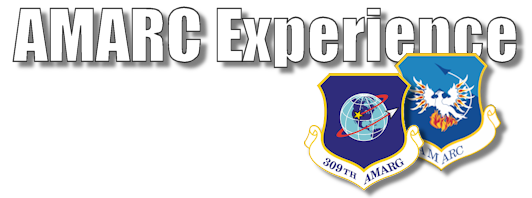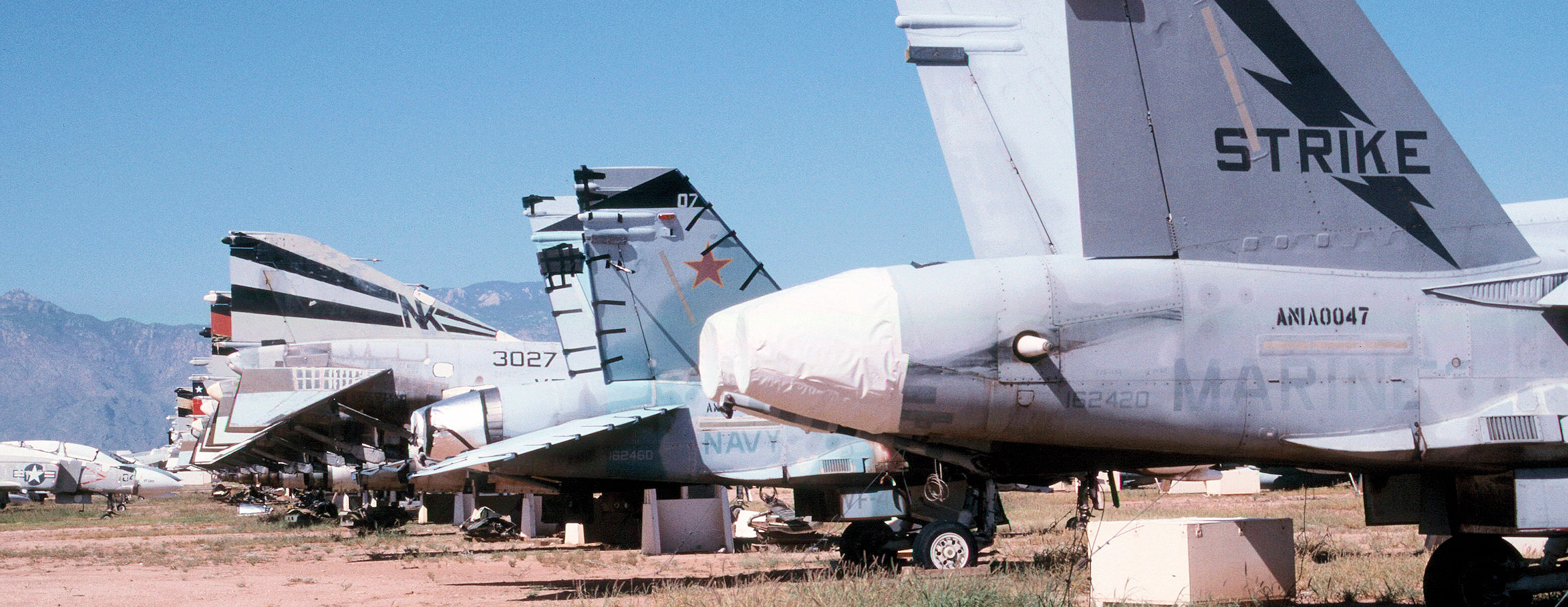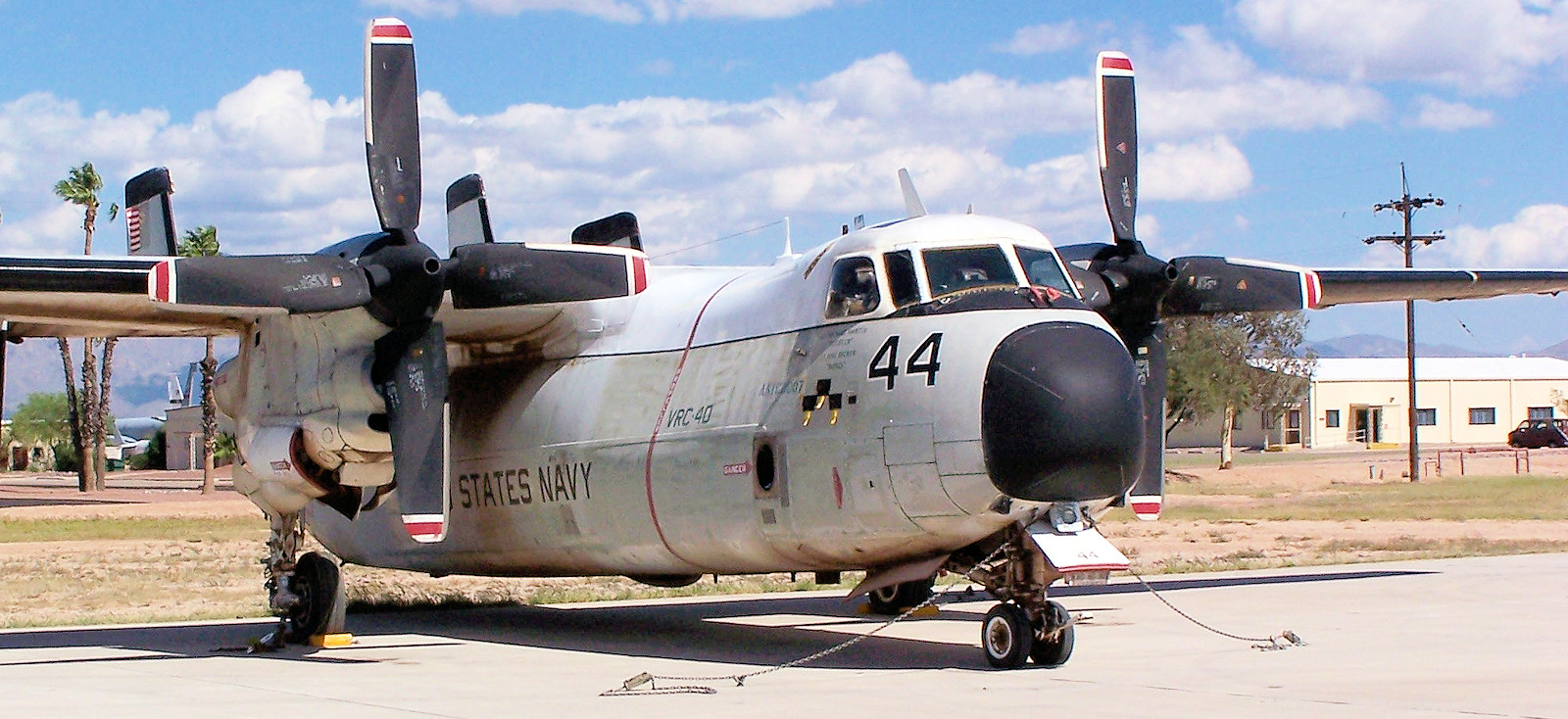The Lockheed Skunk Works is now famous for the many black projects that it has been involved in since the early 1960s. The most famous of which is the Lockheed SR-71 Blackbird which, from its secretive history, has become one of the most familiar and popular aircraft types ever. Not to be confused with the SR-71 Blackbird, which entered service later and was operated by the U.S. Air Force, the A-12 Oxcart was the SR-71 forerunner and was developed for and operated by the CIA.
It may seem strange that the type is receiving attention on this website as no examples of it have ever actually been stored at Davis-Monthan AFB, however, there have been several interesting A-12 connections to the base over the years which are not well known. During 2017 the CIA released a vaste amount of FOIA documentation to the general public including a many details on the Oxcart and Tagboard projects, including the investigation into the possibility of A-12 storage at Davis-Monthan AFB.
The A-12 Oxcart was originally developed to carry reconnaissance overflights of Cuba during the heights of the Cold War, however, by the time it had entered into secret operation with the CIA, this original mission was deemed risky due to the improved air defense capabilities of the Soviet Unions facilities installed within the country. The loss of a Lockheed U-2 over Cuba in 1960 re-emphasized how capable these capabilities had become. The Soviet SA-2 missile system, with its state of the art S-band radar, had been installed widely across Cuba and it would easily detect and alert defense units to launch their missiles at a range of 30 nautical miles. The SA-2 was not being underestimated and was seen as a serious threat to the A-12, even with its top speed of Mach 2.8 at a height of 78,000ft.
Another problem identified was the valuable intelligence (performance, tactial operation and defensive system characteristics) that the Soviets could gather while tracking A-12 flights over the area and this in turn would 'stimulate the introduction of more sophisticated air defense weaponary'.
{joomplucat:84 limit=4}Two A-12s were
The loss of 60-6941 on 30th July 1966 while releasing its D-21 drone, resulted in the immediate cancellation of Project Tagboard. The D-21 drone project was
Oxcart phase down announced in late December 1966.Final Missions
Due to delays in the Air Force getting up to operational SR-71 readiness the OXCART program was extended twice to cover for the missing reconnaissance capability. The two three month extensions were announced on 23rd October 1967 and 29th December 1967. During this time three operational A-12s were stationed alongside three Air Force SR-71s at Kadena Air Base Japan, where they provided a contingency overlap on reconnaissance operations.
The three deployed A-12s were 60-6937 on 22-MAY-1967, 60-6930 on 24-MAY-1967 and 60-6932 on 26-MAY-1967. Due to an inertial navigation system problem the pilot of the 3rd A-12, 60-6932, elected to make a precautionary landing at Wake Island and actually completed the deployment flight the next day.
The twilight missions for the A-12 consisted of overflights of North Korean SAM missile sites (2 missions), North Vietnam (24 missions) and Cambodia (2 missions) from Kadena.
Following the completion of their eleven month deployment the first of the three Kadena based A-12s, 60-6937, departed Kadena AB on 8th June 1968 but had to divert into Wake Island due to a fuel leak on the right engine which was noted by a tanker crew during inflight refueling. After repair it was able to depart Wake Island on 14th June 1968 for a subsonic flight to Hickam AFB, HI. 60-6937 once again took to the air on 19th June 1968 for a final supersonic flight back to the U.S.A.
The second A-12 departed on 9th June 1968, and after an incident free flight arrived in the U.S.A 5.29 hours later.
Upon phase down the remaining fleet consisted of one two seat trainer, two test, one M-21 Tagboard mothership and five operational aircraft.
By February 1967 A-12 60-6925, which was allocated as a Test aircraft, and M-21 60-6940 had already been placed in indefinite storage in the South Base hangars at Lockheed's Palmdale site. The other seven remaining aircraft joined them between 28th May and 21 june 1968. while plans were undertaken for a more long term solution.
The processing of the A-12s into storage consisted of the;
- Removal of ejector seat pyrotechnics
- Cleaning, lubrication and preservation of interior, gear, fittings, etc.
- Covering of hatches and openings
- Removal of engines
- Draining and flushing of engine oil from remote gear box
- Defuelling and flushing with Nitrogen
- Removal of specialist electrical equipment
- Placement if 25lbs of desiccant in cockpit
- Bleeding and flushing of brake and hydraulic systems
Due to space restrictions in the South Base hangars the A-12s and their engines where stored
Longer Term Storage Decision
Three long term A-12 storage sites were considered during Scope Cotton. Lockheed's Palmdale plant, Davis-Monthan AFB and another site whose name was redacted in the FOIA documents (for use on this web page this site will be referred to as 'Option 3.'>. This is probably either Groom Lake/Area 51 or Tonopah, but may well be another site which has not been associated with black projects.
Option 3. was described as having a number of alert hangars which could provide sealed .the best security.
Lockheed A-12 on AMARC Inventory
With the official release of the AMARC Inventory dated 18th June 1998, the nine remaing A-12s suddenly started to appear on the listing with an incorrect MDS of 'A010A', the 'AAAF' PCN prefix and a location stated as 'PALMDALE'. The serial numbers were listed incorrectly using a '99' fiscal year instead of using the correct 1960 one. The A-12s finally left the inventory after a year and a half following the 7th January 2000 release.
| PCN | Location | Serial | In Date | MDS |
| AAAF0009 | PALMDALE | 99006940 | 15-APR-77 | A011A |
| AAAF0001 | PALMDALE | 99006924 | 15-APR-77 | A011A |
| AAAF0005 | PALMDALE | 99006931 | 15-APR-77 | A011A |
| AAAF0007 | PALMDALE | 99006937 | 15-APR-77 | A011A |
| AAAF0006 | PALMDALE | 99006933 | 15-APR-77 | A011A |
| AAAF0008 | PALMDALE | 99006938 | 15-APR-77 | A011A |
| AAAF0004 | PALMDALE | 99006930 | 15-APR-77 | A011A |
| AAAF0002 | PALMDALE | 99006925 | 15-APR-77 | A011A |
| AAAF0003 | PALMDALE | 99006927 | 15-APR-77 | A011A |
Lockheed A-12 Production
| Serial | Article #/CN | Model | Delivered | Notes | Fate |
| 60-6924 | 121 | A-12 | Test Aircraft | Displayed at Plant 42, Palmdale, CA. | |
| 60-6925 | 122 | A-12 | Test Aircraft | Displayed at USS Intrepid Museum, New York, NY. | |
| 60-6926 | 123 | A-12 | W/o 24-MAY-1963. Crash probably caused by pilot disorientation while in clouds leading to stall and spin. Blocked total pressure port could have been primary or secondary cause. Crash site was 14 miles south of Wendover, UT. Pilot ejected safely. | ||
| 60-6927 | 124 | A-12 | Dual-seat Trainer | Displayed at California Science Center, Los Angeles, CA. | |
| 60-6928 | 125 | A-12 | W/o 05-JAN-1967. Pilot killed. Cause of crash was probably a fuel gauging error which led to fuel starvation and engine flame-out 67 miles from base. | ||
| 60-6929 | 126 | A-12 | W/o 28-DEC-1965. Crash during take-off caused by pitch gyros being mis-connected during maintenance to the yaw gyros and vice versa. | ||
| 60-6930 | 127 | A-12 | 14-MAY-1963 | U.S. Space & Rocket Center, Huntsville, AL. | |
| 60-6931 | 128 | A-12 | 11-JUN-1963 | Displayed at CIA HQ, Langley, VA. | |
| 60-6932 | 129 | A-12 | 30-JUL-1963 | W/o 05-JUN-1968 | |
| 60-6933 | 130 | A-12 | 11-SEP-1963 | Display at San Diego Air & Space Museum, CA. | |
| 60-6937 | 131 | A-12 | 22-OCT-1963 | Displayed at Southern Museum of Flight, Birmingham, AL. | |
| 60-6938 | 132 | A-12 | 11-NOV-1963 | Displayed at Battleship Memorial Park, Mobile, AL. | |
| 60-6939 | 133 | A-12 | 17-DEC-1963 | W/o 09-JUL-1964. Crashed happened just short of the runway at Area 51 at an airspeed of approx. 200 knots. Aircraft rolled to 45 degrees to the left due to a partially stuck valve in the right outboard elevon servo. This caused the right outboard elevon to move to the full down position. The insuing roll could not be corrected by the pilot. Pilot ejected safely. | |
| 60-6940 | 134 | M-21 | Displayed at Museum of Flight, Seattle, WA. | ||
| 60-6941 | 135 | M-21 | W/o 30-JUL-1966. Aircraft was destroyed when it was impacted by a D-21 drone which it had just released. |
Specifications
| Crew | 1 |
| Length | 101 ft 7 in (30.96 m) |
| Wingspan | 55 ft 7 in (16.94 m) |
| Height | 18 ft 6 in (5.64 m) |
| Wing area | 1,795 sq ft (166.8 m2) |
| Max takeoff weight | 117,000 lb (53,070 kg) |
| max landing weight | 52,000 lb (24,000 kg) |
| Payload | 2,500 lb (1,100 kg) |
| Fuel capacity | 10,590 US gal (40,100 l; 8,820 imp gal) of JP-7 (68,300 lb (31,000 kg) at 6.45 lb/USgal) |
| Powerplant | 2 × Pratt & Whitney JT11D-20B (J58-1) After-burning turbojet / ramjet, 20,500 lbf (91 kN) thrust each dry, 32,500 lbf (145 kN) with afterburner |
Performance
| Maximum speed | Mach 3.35 |
| Range | 2,500 nmi (2,877 mi; 4,630 km) |
| Service ceiling | 95,000 ft (29,000 m) + |
| Rate of climb | 11,800 ft/min (60 m/s) |
| Wing loading | 65 lb/sq ft (320 kg/m2) |
| Thrust/weight | 0.56 lbf/lb (0.0011 kN/kg) |









